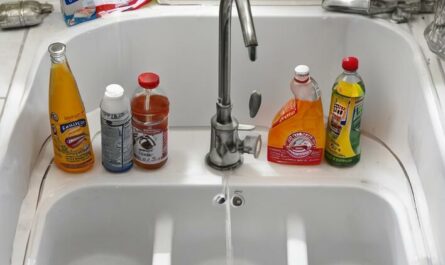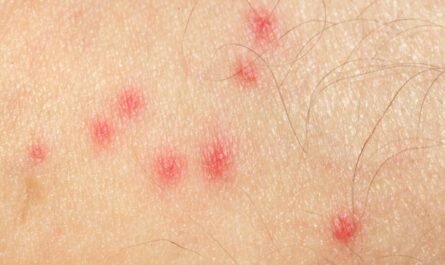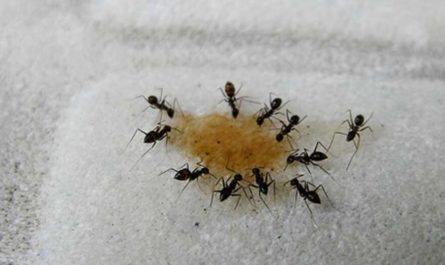Clogged drains are a common household nuisance that can cause water to back up in sinks, showers, and tubs. While chemical drain cleaners are readily available, they often contain harsh ingredients that can corrode pipes and harm the environment. Fortunately, there’s a natural and effective solution right in your kitchen pantry: baking soda and vinegar.
This dynamic duo creates a fizzy reaction that can help break down and dislodge clogs caused by hair, soap scum, food particles, and other debris. Best of all, it’s inexpensive, non-toxic, and gentle on your plumbing system. Let’s dive into the details of how to use this simple yet powerful combination to unclog your drains.
Understanding the Science Behind Baking Soda and Vinegar
Baking soda (sodium bicarbonate) is a mild alkali, while vinegar (acetic acid) is a mild acid. When these two substances are combined, they undergo an acid-base reaction that produces carbonic acid. This will quickly decompose into carbon dioxide gas and water.
This chemical reaction creates the familiar fizzing and bubbling action that helps to loosen and dissolve clogs. The carbon dioxide gas expands, increasing pressure in the drain and helping to push the clog through the pipes.
The Fizzy Reaction Explained
When baking soda (a base) and vinegar (an acid) are mixed, an acid-base reaction occurs, resulting in the formation of carbonic acid:
NaHCO3 (baking soda) + CH3COOH (vinegar) → H2CO3 (carbonic acid) + CH3COONa (sodium acetate)
Carbonic acid is an unstable compound that quickly decomposes into carbon dioxide gas and water:
H2CO3 → CO2 + H2O
It’s this release of carbon dioxide gas that creates the fizzing and bubbling action, which helps to agitate and break down the clog.
Why Baking Soda and Vinegar Work So Well
Beyond the fizzy reaction, baking soda and vinegar are effective at unclogging drains for several reasons:
- Abrasive Action: Baking soda is a mild abrasive, which can help to scrub away and break down stubborn buildup in the pipes.
- Grease-Cutting Power: Vinegar is an excellent grease-cutter, helping to dissolve and loosen greasy clogs.
- Acid-Base Reaction: The acid-base reaction between baking soda and vinegar creates a powerful yet gentle cleaning solution that can dissolve organic matter and mineral deposits.
- Environmentally Friendly: Unlike harsh chemical drain cleaners, baking soda, and vinegar are natural, non-toxic, and biodegradable. This makes them a safer choice for your pipes and the environment.
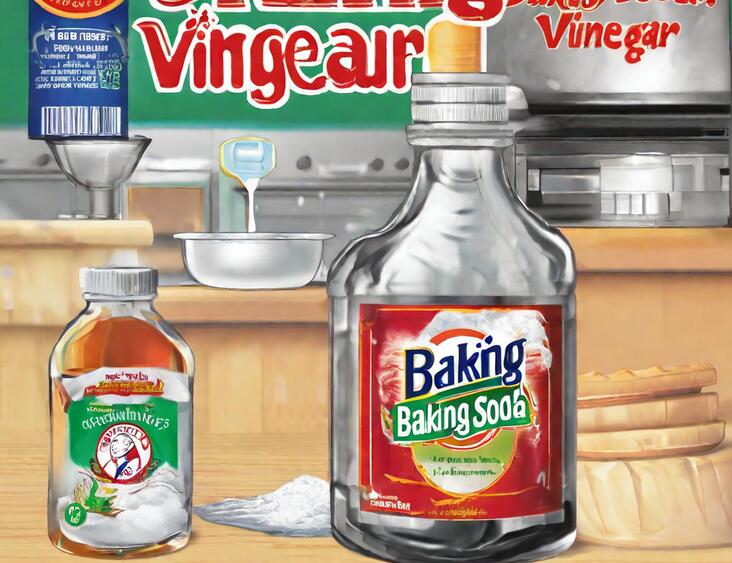
Preparing to Unclog Your Drain
Before starting the unclogging process, gather the following items:
- Baking soda
- Vinegar
- Hot water
- Rubber gloves
- Plunger (optional)
Before applying the baking soda and vinegar mixture, it is important to remove any visible debris or blockage from the drain opening. Use a pair of gloves to manually remove hair or other objects that may be obstructing the flow.
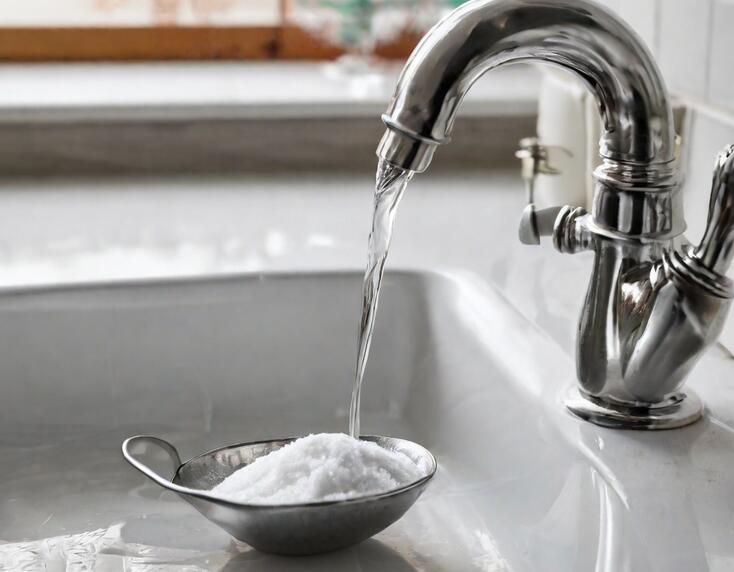
How to Unclogging Your Drain with Baking Soda and Vinegar
Follow these steps to effectively unclog your drain using baking soda and vinegar:
Step 1: Clear the Area and Pour Baking Soda
First, clear the area around the drain and remove any standing water. Then, pour approximately 1/2 cup of baking soda directly into the drain. Make sure to distribute it as evenly as possible.
Baking soda, also known as sodium bicarbonate, is a versatile household ingredient that has many cleaning and deodorizing properties.
In the context of unclogging drains, baking soda acts as a mild abrasive that can help break down stubborn debris and grease. Its alkaline nature also helps to neutralize odors that may be emanating from the drain.
Step 2: Add Vinegar and Observe the Reaction
After pouring the baking soda, slowly pour a mixture of 1 cup vinegar and 1 cup hot water into the drain. Be prepared for a fizzy reaction as the vinegar reacts with the baking soda. This reaction helps to break down the clog and clear the drain.
Vinegar, a staple in most kitchens, is a weak acetic acid that exhibits antimicrobial properties. When combined with baking soda, vinegar creates an effervescent reaction due to the release of carbon dioxide gas.
This reaction generates agitation and bubbling within the drain, which can help dislodge debris and push it further down the pipe.
Step 3: Flush With Hot Water
Allow the baking soda and vinegar mixture to sit in the drain for about 30 minutes. This provides ample time for the chemical reaction to take place and dissolve the clog.
Afterward, flush the drain with hot water to remove any remaining debris and ensure the clog is completely cleared. Use a kettle or a pot of boiling water for this step.
Hot water acts as a natural solvent that can help dissolve any residual grease or soap scum that may be clinging to the pipes. It also helps to flush away any loosened debris, ensuring that the drain is thoroughly cleaned and restored to its optimal function.
Additional Tips for Tough Clogs
For more stubborn clogs, you may need to repeat the process or use a plunger to help dislodge the blockage. Plunging can create additional pressure that aids in breaking apart the clog. Here’s how you can use a plunger effectively:
- Ensure that the plunger completely covers the drain opening.
- Create a tight seal by applying petroleum jelly or water around the rim of the plunger.
- Push the plunger down firmly and pull up vigorously, repeating this motion several times.
- After a few attempts, check if the water starts to drain. If not, repeat the process or consider calling a professional plumber for further assistance.
Remember to exercise caution when using a plunger, as vigorous plunging can cause splashing. It is also important to avoid using a plunger if you have recently used chemical drain cleaners, as the combination of chemicals can produce hazardous fumes.
Tips for Successful Drain Unclogging
- Use Fresh Baking Soda and Vinegar: Ensure that your baking soda and vinegar are fresh and potent for the best results. Old or expired products may not react as effectively.
- Avoid Metal Drain Covers: If using a drain cover, opt for a plastic or rubber one. Because metal covers can react with the vinegar and cause discoloration or corrosion.
- Be Patient: For stubborn clogs, you may need to repeat the process several times or let the baking soda and vinegar mixture sit for an extended period before flushing with boiling water. Clogs that have built up over time may require more effort to dissolve.
- Use a Plunger: If the clog persists after multiple attempts with baking soda and vinegar, try using a plunger to increase the pressure and dislodge the clog. The plunger can help to agitate and push the clog through the pipes.
- Try a Drain Snake: For particularly stubborn clogs that won’t budge with baking soda, vinegar, and a plunger, you may need to use a drain snake or auger to physically break up and remove the clog.
- Call a Professional: If the clog remains stubborn despite your efforts, it may be time to call a professional plumber. There could be a more significant blockage, a problem with your plumbing system, or even a tree root infiltrating the pipes.
Maintaining Clear Drains
While baking soda and vinegar can be an effective solution for unclogging drains, prevention is always better than cure. Here are some tips to help keep your drains clear and flowing smoothly:
- Use Drain Covers: Install drain covers or hair catchers in sinks, showers, and tubs to prevent hair and debris from entering the drain in the first place. This can significantly reduce the buildup of clogs over time.
- Avoid Pouring Grease or Oil Down the Drain: Grease and oil can solidify and contribute to clogs, so dispose of them properly in the trash or a designated container. Never pour cooking grease or oil down the drain.
- Flush with Hot Water Regularly: Once a week, flush your drains with hot water to help dissolve and remove any buildup of soap scum, hair, or other debris. This simple maintenance step can prevent minor clogs from becoming major issues.
- Perform Regular Maintenance: Periodically use the baking soda and vinegar method as a preventative measure to keep your drains clear and fresh-smelling. This can help to break down any minor buildup before it becomes a full-blown clog.
- Avoid Harsh Chemicals: While chemical drain cleaners may seem like a quick fix, they can damage your pipes over time and contribute to corrosion. Stick to natural solutions like baking soda and vinegar whenever possible.
When to Call a Professional Plumber?
While baking soda and vinegar can be effective for minor clogs, there are some situations where it’s best to call in a professional plumber:
- Severe or Recurring Clogs: If you’ve tried the baking soda and vinegar method multiple times without success. Or if the clog keeps returning, it may be a sign of a more serious blockage that requires professional attention.
- Slow Drains Throughout the House: If multiple drains in your home are draining slowly, it could indicate a larger issue with your main sewer line or septic system. This should be addressed by a plumber.
- Gurgling Sounds or Foul Odors: If you notice gurgling sounds coming from your drains or a persistent foul odor, it could be a sign of a more complex plumbing issue. This usually includes such as a broken or cracked pipe, that requires professional repair.
- Tree Root Intrusion: In some cases, tree roots can grow into and block sewer lines, causing significant clogs. It cannot be resolved with household methods.
- Older Homes with Aging Pipes: If you live in an older home with aging pipes, it’s generally a good idea to have a plumber inspect.
While baking soda and vinegar can be a powerful and cost-effective solution for minor clogs, it’s important to recognize when professional assistance is needed to avoid further damage or more costly repairs down the line.



